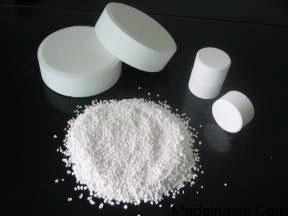
Changing disinfection practice
This practice highlights the effective change from using Chlorine gas for water disinfection which had to be imported to Yemen to using solid chlorine (calcium hypochlorite - Ca(OCl)2) which is available in the local market. The chlorine powder is mixed with water and injected into the network whilst controlling residual chlorine. This practice is used by many water utilities and has contributed to improving the quality of water supply, public health, and controlling the successive waves of cholera that struck Yemen since 2016.
Description of the problem
Yemen faces important drinking water quality problems. Successive waves of cholera in Yemen have increased the burden on water utilities in terms of controlling its water quality. The challenge is to provide good quality water to consumers and this is difficult because of the intermittency of the water supply. Another problem is that due to the war conditions some water systems have been damaged and safe water provision becomes more difficult. The war conditions also complicated the importation of chlorine gas for water disinfection. The chlorine gas is also very toxic and needs strict safety precautions which are difficult to maintain under war and emergency conditions.
Description of the good practice
The practice concerns the replacement of disinfection using imported chlorine gas with disinfection using chlorine powder (Calcium Hypochlorite) from the local market. Automatic chlorine injection units have been installed on dozens of wells. The injection is directly made into the water distribution system, using an injection pressure which is appropriate in relation to the network pressure at the injection point. The use of chlorine powder has proven to be an effective and less expensive technique than using more costly imported chlorine gas.
Impact and sustainability of the good practice
Water disinfection using chlorine in its solid form has contributed significantly to control cholera outbreaks in Yemen, through supplying safe and disinfected water. The use of powder chlorine from the local market enables water utilities to avoid importing costly chlorine gas from the global market. The principal impact of improving water quality remains the delivery of safe and disinfected water to customers, triggering better public health, education, economic growth and control of water-related diseases such as cholera.
Required resources
The approach has limited requirements including
Automatic chlorine injection equipment for each well and pumping station
Training of utility staff to operate the units
A monitoring programme to control the water quality in the entire network.